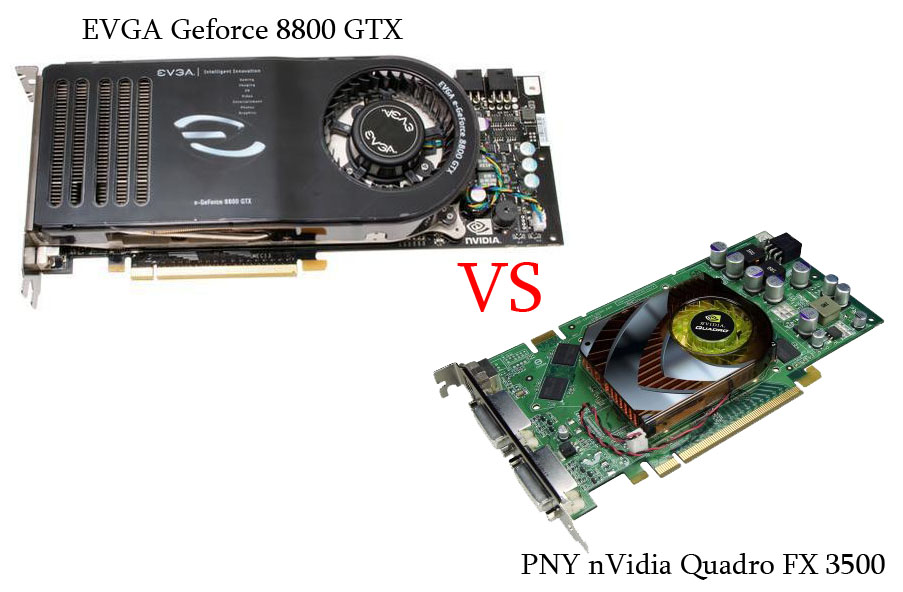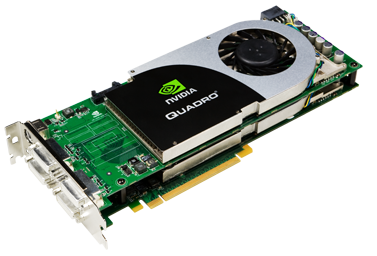Peredelka Geforce V Quadro Fx
Reading benchmarks, comparisons and specs between nVidia Quadro and Geforce cards, it seems that for similar generation cards: Quadro is 2x-3x the price of Geforce hardware wise, the differences are not that great.

.OK, I'm in the planning stages for a dedicated 3D system. I am not a gamer so I do not need all the bells & whistles associates with a game machine.

I also do not have a budget that can support the pro grade tools. Hence, apps like Carrara7/8 Hexagon, and the upcoming Bryce7 are more my speed. Baixar jogo midnight club 3 para pc gratis baixaki. I had been considering the FX580 because of its OpenGL performance and low power requirement. However, I have also been advised to look as the mainstream GPUs, most notably (based on my budget) the GTS240 and 250. One of the points that was mentioned was that more memory (the GTS250 has twice the memory of the FX580) would be very helpful in working with large or complex scenes on OGL mode. Currently, both GPUs are about the same price with the GTS/GTX series projected to go down in price with introduction of the new Fermi units. Speak out advanced workbook free download.
So my question is which GPU would suit my needs better? .thank you for the recommendations. Two of he most important factors for me are OGL performance and heat production. I tend to work with a lot of lights and complex textures. The more that can be displayed in 'working' mode the less I have to depend on frequent software driven test renders. A number of the reviews I read point to the unit's cool and quiet operation which is a huge bonus for me as the less heat the better for system longevity. I am also working with learning Blender (2.5 beta) so there I might see more of the Quadro's benefits.
Now that we’ve opened up the conversation to what makes top GPU companies (AMD and NVIDIA) different by highlighting the specifics behind what makes each company’s product unique — let’s cover the different tiers or classes of what separates professional and consumer grade GPU’s. A common conversation topic of current day PC users is the presence of two distinct lines of graphics cards by big manufacturers like NVIDIA.
There professional-level cards like the Quadro series are for research and CAD pros; then there are PC game, consumer based cards in the GeForce GPU models. What makes them different? GeForce The GeForce desktop cards are generally referred to as GPU’s, video cards or gaming cards, because that is likely going to be their intended use in a custom PC. Although, not all gaming graphics cards are meant for gaming, and, in fact, some even tend to perform similar to workstation cards. The industry’s most popular choice of cards is NVIDIA graphics cards with approximately 75% market share according to Overclockers Club. These cards are broken down as such – lower number titled cards represent smaller, budget oriented cards, while higher numbers represent higher-end, faster gaming cards.
It is important to note that most cards in the industry are re-branded and modified by various hardware manufacturers. For instance, NVIDIA designs the chipset otherwise known as the reference design as a baseline GTX series gaming cards which can then be replicated by companies such as Asus, EVGA, GIGABYTE, MSI.etc — These reference cards are then modified with their own specific cooling solutions, GPU fans, air shrouds, and so on – and then sold as a card under that company’s brand name. Quadro Unlike the gaming desktop video cards, workstation cards are engineered for specific applications. Typically, they are not designed for gaming or basic computer use.